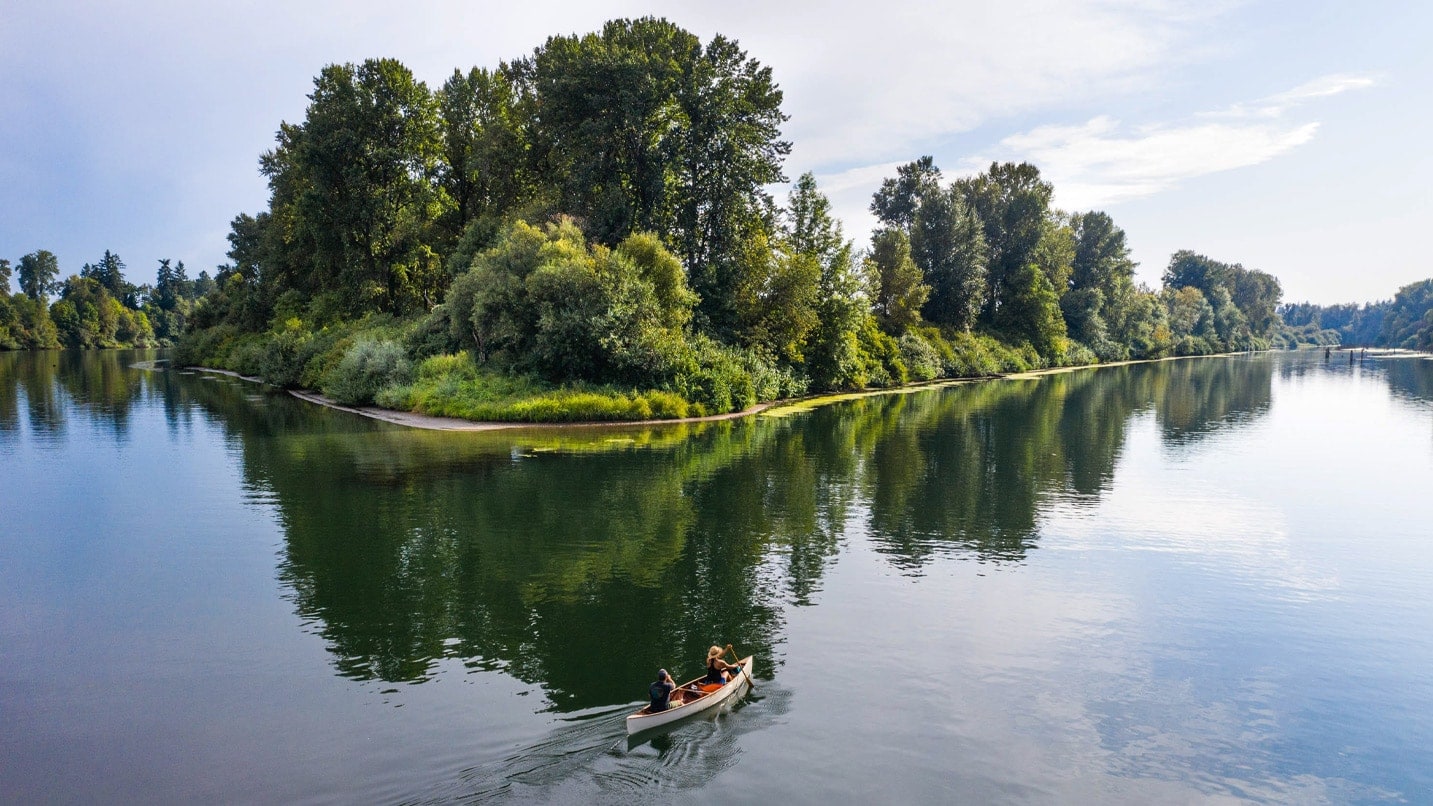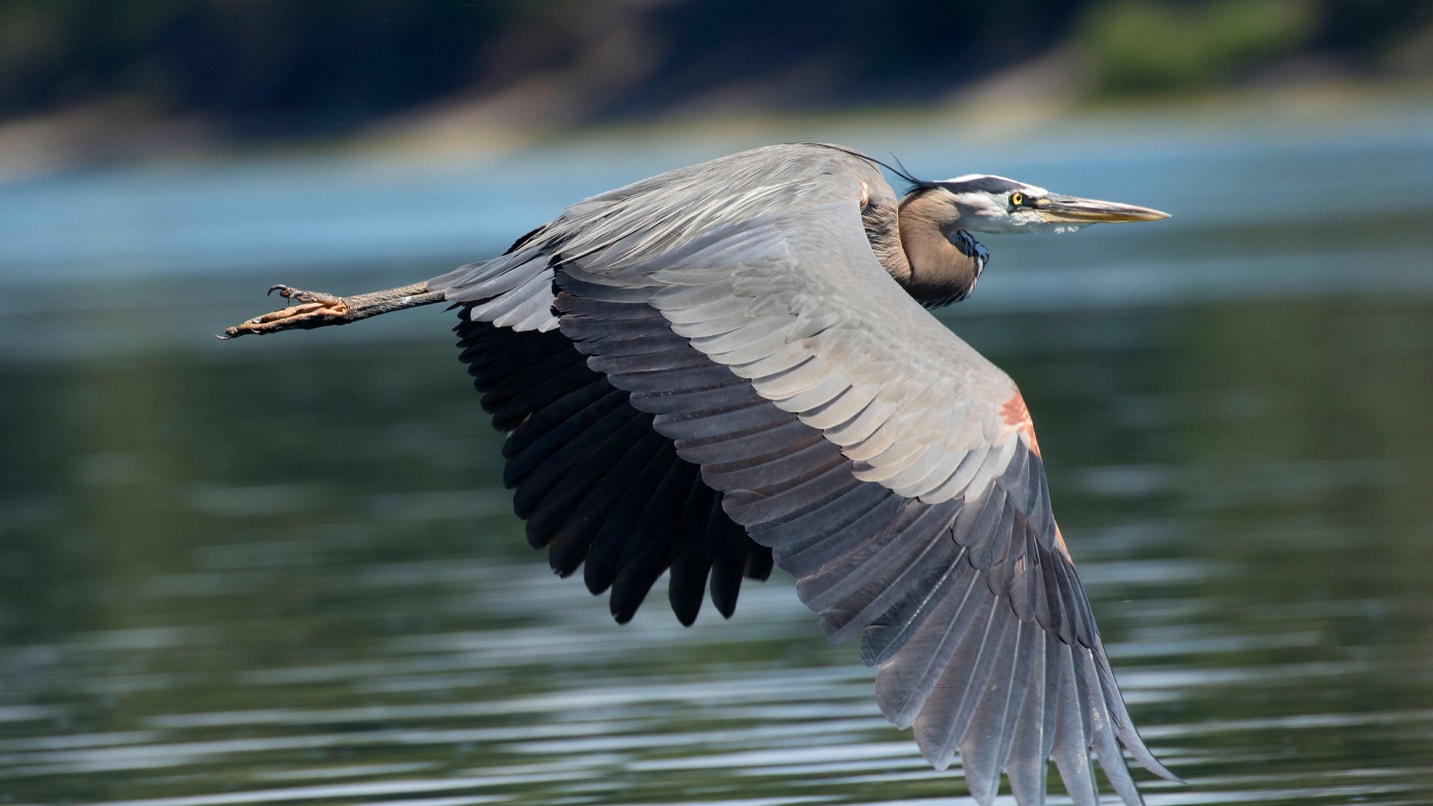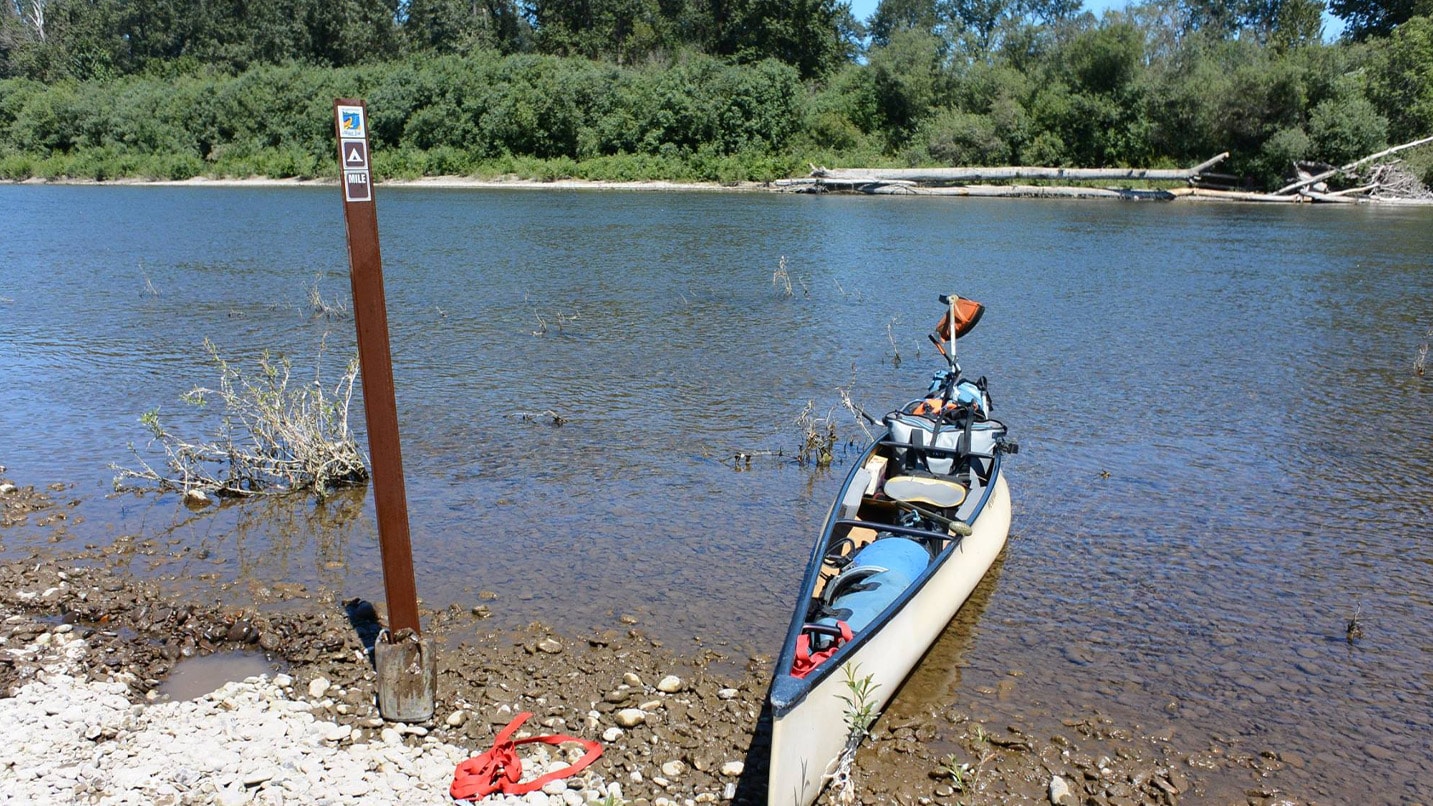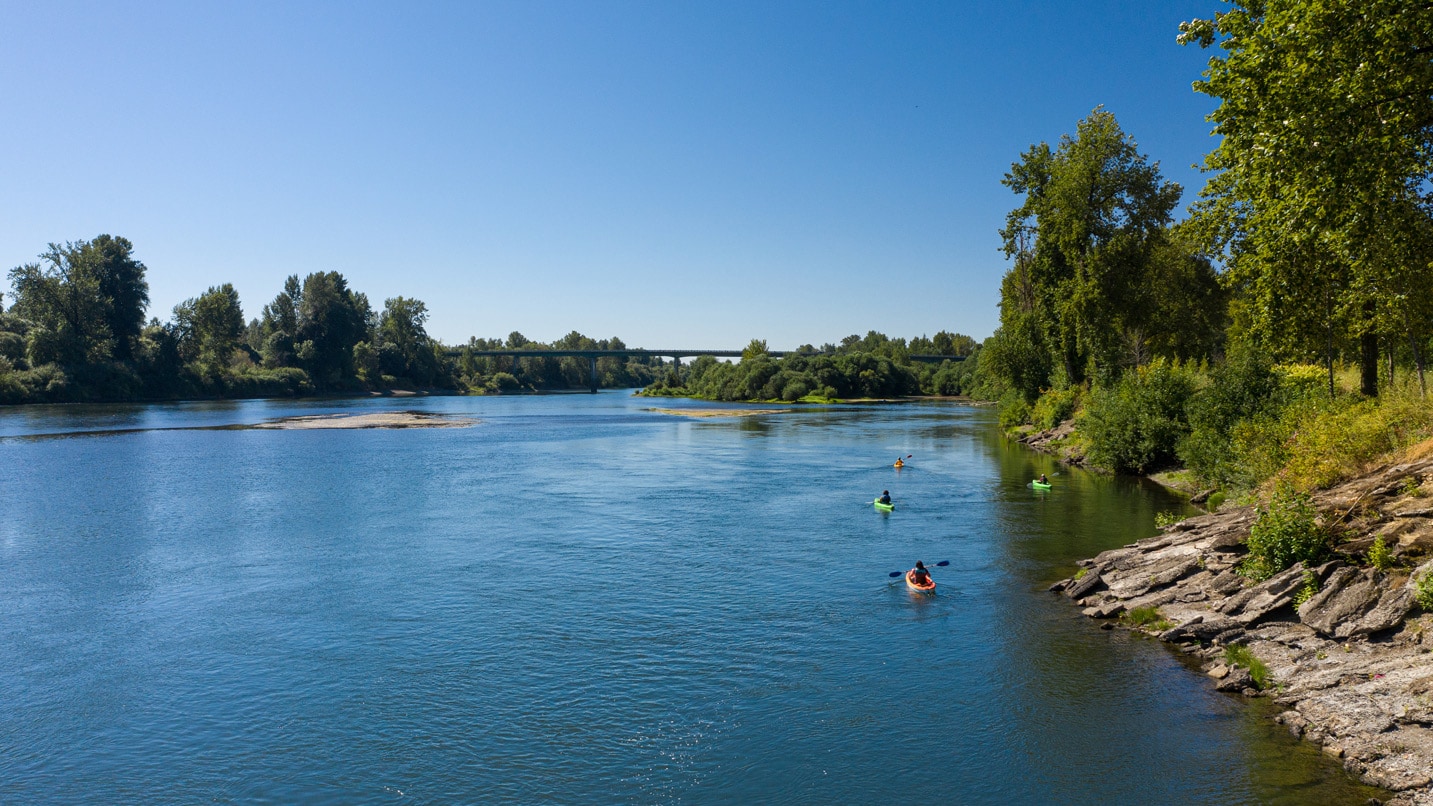“Want to go canoeing?” my friend Ian asked a few years back.
I did. But I was also a bit of a reluctant sell. I grew up on an island in Puget Sound, and I’d spent many happy hours as a kid mucking around in various dinghies, sailboats and kayaks. But when I was 22, I’d fallen out of a kayak in a fast-moving river and been swept into a tangle of brushy growth off the bank — not a good place to be. I emerged unharmed but newly equipped with a healthy fear of fast-moving water. Plus, I’d never even been in a canoe, a gaping hole in my maritime education.
Ian did his best to assuage my concerns. He assured me that the river span he had in mind, the Willamette River just north of Salem, had no fast-moving water, technical rapids or difficult passages. Plus, he’d lend my husband and me the widest, most stable canoe he could get his hands on. So I agreed, and found myself packing personal flotation devices (PFDs) and a dry bag with equal parts excitement and trepidation one warm summer evening for an overnight paddle trip on the Willamette River Water Trail.
Extending almost 190 miles as it flows south to north along the length of Western Oregon’s Willamette River, the Water Trail is a network of paddler-centric parks, natural areas and campsites. “It’s one of just a handful of nationally recognized water trails,” says Kate Ross Kuthe, outreach and education coordinator for Willamette Riverkeeper, a nonprofit organization that manages the Water Trail and works to ensure a clean, healthy river. “But it’s still under the radar.” Translation: Even longtime Oregonians are flabbergasted to learn it is entirely possible to launch your raft or kayak from a suburban park and find yourself camping on an isolated river bar just a few pleasant river miles later.
Count me among the surprised. I’ve spent the last 17 years living alongside the Willamette River, crossing it by bicycle on my daily commute or whizzing past it on Interstate 5. And I’m somewhat ashamed to admit this, but I’d never really thought of it as a recreational river. I saw the concrete-bounded ribbon of water as a convenient landmark for bisecting the city of Portland and the source of occasional, mildly irritating bridge lifts. Rafters and paddlers always went east, I figured, to the Deschutes or some other “wilder” river.

Precious Cargo: Wine, Sandwiches and Plenty of Snacks
With this unpromising attitude, I appeared at the assigned time and place the next morning, dry bag in hand, slathered from head to toe in SPF 100, a bit anxious based on the name of our launch point: Keizer Rapids Park. Yet the morning water was as smooth as glass, and two fellows in a fishing boat waved cheerfully as I stood on the shore and debated whether it was too early to break into the Tim’s Jalapeno potato chips I’d tucked into my backpack. After distributing our gear amongst the boats — three canoes and two kayaks — and a quick safety check, our eight-person crew was off.
Canoeing doesn’t seem like it should work. It’s hard to mentally translate free-form paddling so close to the craft into propulsive forward movement. Yet it does work. Plus, canoes come with another benefit over kayaks: capacity. Our cargo included three PFDs (one for each of us, plus an extra just in case); a tent; sleeping bags; several gallons of water; our cushiest sleeping pads; real pillows; a two-burner camp stove and cast-iron pans; a massive tote bag full of snacks; and a cooler stocked with shrimp-remoulade sandwiches, fixings for stuffed trout and marionberry cobbler, and enough wine to share. (Tip: Many canned Oregon wines like those from Stoller and Union Wine Co. are made just for this purpose.) If nothing else, I was confident that we would not be roughing it.

A New Perspective: Sights, Sounds and Wildlife on the Water
Yet we quickly discovered that canoes also offer a gentle stress test to the communication skills of the paddling team. In our case, after a few benign bickers with my husband, likely fueled by my vague moving-water anxiety, we settled on me in the stern steering and him in the bow providing the power. Our front-wheel-drive approach worked. My initial flutters relaxed, and as I got more comfortable reading the water for snags and shallow bars, I was able to take in my surroundings with more attention. The river teemed with birdlife, from tiny swallows skimming above the water to gawky great blue herons who launched themselves with indignant grawks as we passed. Along the riverbanks, willow thickets were spangled with pink clouds of blooming spirea and we spotted several large birds’ nests in the trees along the bank top.
We also encountered a few hints of the Willamette’s working side. Rhythmic humming signaled the presence of the occasional irrigation pipe, pumping fresh water to farmers’ fields. We maneuvered carefully around the tiny Wheatland Ferry as it sailed from one bank of the Willamette to the next, loaded with a handful of farm trucks. Kuthe says that its agricultural side is part of what makes the Willamette River Water Trail unique.

“You get so much variety throughout the entire trail,” says Kuthe. “You can feel like you’re having a wilderness experience, and then you’re passing hop farms or grass farms, and you’ll see a cow or llama along the side of the river. Then maybe you pass through a small town like downtown Independence where you can hop out and grab a hot latte.” Brew Coffee and Tap House is just a short walk from Riverview Park, and the Independence Heritage Museum offers exhibits about the history of hop growing, the Oregon Trail and the Kalapuyan peoples.
Late in the day, we came to a particularly wide section of the river where the water slowed to the gentlest flow. I let my eyes drift upward to see two red-tailed hawks circling above the river, dipping and swirling in the golden afternoon light. The banks on either side were steep and forested, and along the shoreline, I saw a narrow black shadow hopping with agility from one rock to the next: a non-native mink, legacy of fur trappers’ imports.
Finally, just as the sun was beginning to drop low in the sky, we reached our campsite at Candiani Bar, just a mile from downtown Dayton. (Since there are no reservations on the Water Trail, it’s good to have a few options in mind.) After pulling our canoes ashore and lashing them to a downed log, we popped open an Oregon gamay for an impromptu happy hour while our stuffed trout sizzled in the pan. With river rocks still radiating warmth, there was just enough time for a post-dinner swim before we collapsed, happily exhausted and still sticky with sunscreen, for the night.
The next morning, I sat on the shady riverbank and watched a kingfisher hunting for its breakfast while my coffee brewed. The river was mirror-smooth, and the only sound I heard was the occasional splash of a leaping fish. It was hard to believe that the busy cityscape was just a few miles away — and hard to believe that I’d lived alongside the multifaceted Willamette River for so long without knowing its many other faces.

If You Go:
- Ready to plan your trip? Check out the Willamette River Water Trail website for maps, a gear checklist, outfitters and guides, shuttle services, how to rent equipment, and more resources for making your outing safe and fun. Make sure you have a waterway access permit too.
- Match your trip to your skills. The southern reaches of the Willamette River generally have faster-moving, shallow water with more wood hazards and shifting gravel bars. Northern reaches tend to be deeper and slower. Every stretch requires attention to water conditions. “You don’t want to underestimate the river. You need to use caution, and try to inform yourself as best you can before you go,” says Kuthe.
- If you camp, get familiar with river etiquette and ways to Take Care Out There, and plan accordingly. Water Trail campsites are primitive, which means you’ll need to pack out your waste — and yes, that means human waste, too.
- Don’t drink and boat. It’s illegal and it’s dangerous. Every year intoxicated people drown in Oregon boating accidents. Save the IPA for when you get to camp to stay safe and avoid citations — and don’t forget to pack that can out when you leave.
